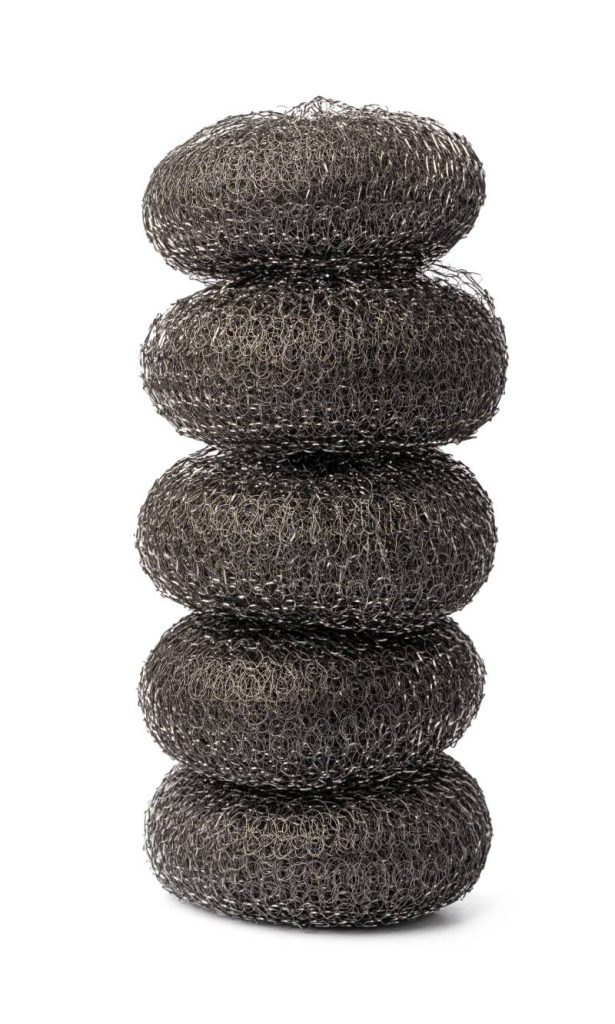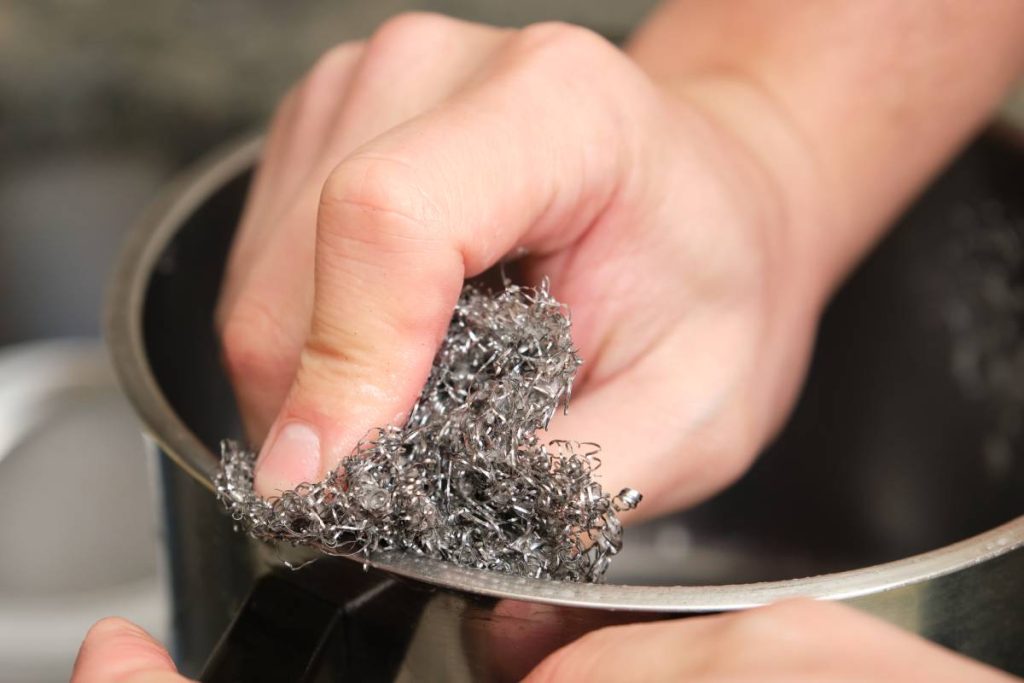When it comes to cleaning your home, you might feel overwhelmed with all the different tools, products, and methods available. However, sometimes simplicity is best.
Enter steel wool. This abrasive tool is great for removing built-up grime and rust stains, thanks to its fine, sharp steel fibres. You can choose between coarse steel wool for heavy-duty jobs or fine steel wool for gentler cleaning without scratching the surface.
But, be cautious. Steel wool is highly abrasive and can cause irreversible scratches, so avoid using it on surfaces like plastic or stainless steel.
If you’re unsure about when or how to use steel wool, we’ve got you covered.
What is steel wool? What it is used for?
Steel wool is a bundle of very fine and flexible steel filaments, usually made from low-carbon steel wire. It’s typically available in various grades, ranging from extra fine to extra coarse, depending on the thickness and density of the filaments.
Steel wool is commonly used for a variety of purposes:

- Cleaning: It’s often used to scrub and clean various surfaces, including metal, wood, glass, and ceramics. Due to its abrasive nature, it can remove rust, paint, stains, and other tough residues.
- Polishing: Steel wool is used in polishing applications, especially for woodwork and metalwork. It can smooth out imperfections, buff surfaces, and create a smooth finish.
- Finishing: In woodworking, steel wool is used to apply finishes like wax or oil. It helps to spread the finish evenly and can also smooth out the surface between coats.
- Crafts and DIY projects: Steel wool is sometimes used in arts and crafts for various effects, such as distressing wood or creating textured surfaces.
- Fire starting: Fine-grade steel wool can be used as a fire starter when combined with a battery. When the steel wool is touched to the battery terminals, it creates sparks, igniting the wool and any nearby kindling.
- Pest control: Steel wool can be used as a barrier to prevent them mice from entering buildings. Its abrasive texture makes it difficult for them to chew through.
Is steel wool safe with food?
Steel wool is not considered safe for use with food. Here’s why:
- Metal contamination: Steel wool is made from steel, which can leave metallic residues on surfaces. These residues could contaminate food, especially if the steel wool is used for cleaning pots, pans, or other cooking utensils.
- Chemical coatings: Some steel wool products may have chemical coatings or treatments that are not safe for food contact. These coatings can transfer to food and pose health risks.
- Rust and corrosion: If steel wool is used to clean cooking surfaces and is not thoroughly rinsed or dried, it can leave behind rust or corrosion, which is not safe for food preparation.
For cleaning purposes in the kitchen, it’s better to use designated scrubbers and brushes that are specifically labelled as food-safe. These are usually made from materials like nylon or natural fibres, which don’t pose the same risks as steel wool.

What should you not use steel wool on?
While steel wool is versatile and useful for many purposes, there are several surfaces you should avoid using it on due to the risk of damage or other issues:
- Nonstick cookware: Using steel wool on nonstick surfaces can scratch and damage the coating, reducing its effectiveness and potentially exposing the underlying metal, which can lead to food sticking and health concerns.
- Chrome or plated surfaces: Steel wool can scratch and dull the finish of chrome-plated or other plated surfaces, such as faucets, fixtures, or decorative items.
- Soft metals: Avoid using steel wool on soft metals like aluminium, copper, or brass, as it can scratch and mar the surface.
- Glass: Steel wool can leave scratches on glass surfaces, particularly if they are delicate or easily scratched, such as glass cooktops or windows.
- Electrical appliances: Using steel wool on electrical appliances can damage the finish and potentially cause electrical hazards if the steel wool is left behind in the appliance.
- Car paint: Steel wool can scratch and damage car paint, leading to costly repairs.
- Stainless steel with a polished finish: While steel wool can be used on stainless steel, it’s best to avoid using it on surfaces with a polished finish, as it can dull the shine.
- Sensitive or painted wood: Steel wool can be too abrasive for sensitive or painted wood surfaces, potentially scratching or removing the finish.
In general, it’s best to test a small, inconspicuous area before using steel wool on any surface to ensure it won’t cause damage. Additionally, consider using alternative cleaning methods or materials for surfaces where steel wool is not suitable.
Avoid using steel wool in the bathroom altogether
While you might want to give your bathroom a thorough clean, steel wool is not the best choice. It can cause permanent scratches and damage to surfaces like faucets, showerheads, bathtubs, and toilet bowls.
Instead, for cleaning your shower and bathtub, mix a few drops of tea tree oil with an all-purpose bathroom cleaner to remove and prevent mould and mildew. Use a scrubbing brush with this mixture to tackle any grime and stains.
For cleaning your toilet bowl, let a mixture of vinegar and baking soda soak in the bowl, then use a toilet brush to tackle tough stains.



